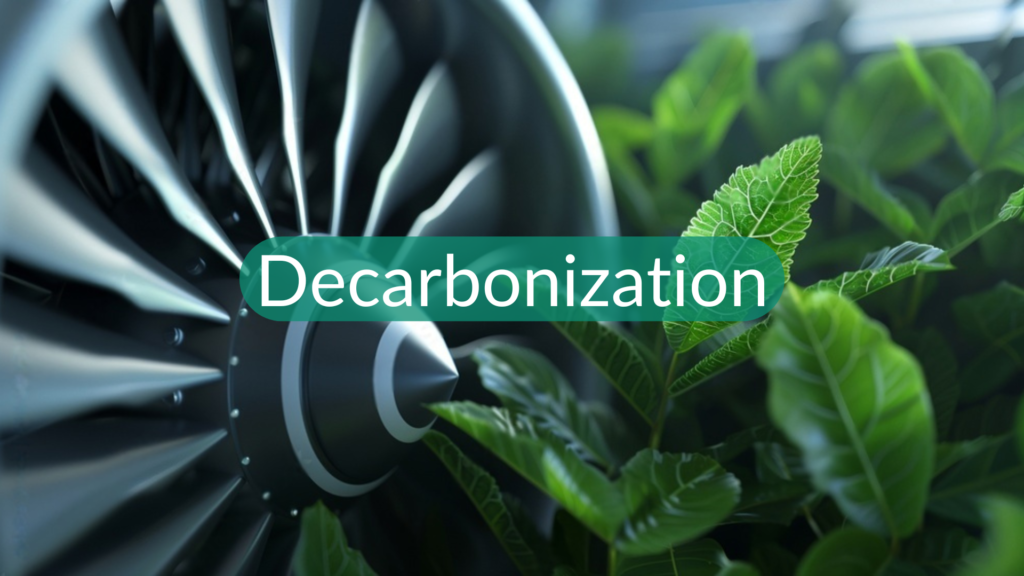
The transition to a low-carbon energy system is one of the most complex yet critical challenges of our time. While innovation in renewable energy and sustainable fuels is advancing rapidly, integrating these technologies into existing infrastructures presents significant hurdles. Researchers like Dharik Mallapragada, Assistant Professor of Chemical and Biomolecular Engineering at NYU Tandon, are working to bridge the gap between scientific discovery and real-world application. His research explores the scalability, resource efficiency, and policy implications of emerging energy solutions—factors that will shape the future of decarbonization.
Within this evolving energy landscape, organizations committed to sustainability play a vital role in translating research into actionable strategies. VURDHAAN remains engaged in this transformation, supporting industries such as aviation, maritime, and road transport in their decarbonization efforts.
Bridging Research and Reality
Decarbonization is not just about developing new technologies—it is about ensuring they can be scaled efficiently, integrated seamlessly, and supported by resilient infrastructure. Mallapragada’s Sustainable Energy Transitions group focuses on creating mathematical models to evaluate low-carbon technologies within different policy and geographical contexts.
According to Mallapragada, energy systems are dynamic, and what appears viable today may become obsolete tomorrow. His research emphasizes providing stakeholders—policymakers, investors, and industry leaders—with insights that enable informed decision-making.
A key case study in his research involves hydrogen production via electrolysis, a process that can generate low-carbon hydrogen when powered by renewable energy. However, its success depends on factors such as clean electricity availability, material supply chains, and cost efficiency.
Challenges in Scaling Hydrogen Technologies
Hydrogen has long been considered a promising alternative fuel, particularly for hard-to-abate sectors like aviation and heavy industry. Yet, significant challenges hinder its large-scale adoption:
1. Clean Electricity Demand
Electrolysis requires substantial amounts of renewable electricity to ensure hydrogen production remains carbon-neutral. This raises concerns about whether diverting clean energy to hydrogen production might slow overall grid decarbonization.
2. Material Supply Chains
Many electrolyzers rely on rare and expensive metals like iridium, which are produced in limited quantities. Scaling up hydrogen production will require strengthening supply chains and developing alternative materials to ensure long-term viability.
3. Cost and Infrastructure
The cost of hydrogen production remains high, and widespread adoption would necessitate massive investments in storage, distribution, and fueling infrastructure. Evaluating the economics of hydrogen is crucial to determining where it should be prioritized within the energy system.
Mallapragada’s work highlights the need for a holistic approach, balancing technical feasibility, economic viability, and environmental sustainability when scaling emerging energy solutions.
Decarbonizing Aviation: The Next Frontier
Aviation presents one of the toughest challenges for net-zero ambitions due to high energy demands and stringent weight constraints. Current jet fuel alternatives must match the energy density, reliability, and safety standards required for flight.
1. Renewable Liquid Fuels
Sustainable aviation fuels (SAFs) derived from biomass and waste materials are a promising near-term solution. They can reduce lifecycle emissions without requiring major changes to existing aircraft and fueling infrastructure.
2. Electrification and Hydrogen Power
While electric propulsion is feasible for short-haul flights, battery limitations make it impractical for long-distance air travel. Hydrogen, with its high energy per mass, offers potential as an alternative, but challenges remain:
- Storage: Hydrogen must be either liquefied at -253°C or compressed at high pressure, both of which increase weight and infrastructure complexity.
- Fuel Cell Development: Advanced fuel cells with high specific power densities are needed to ensure payload capacities remain unaffected.
Mallapragada’s research examines how these technological barriers impact fleet operations, costs, and emissions, offering insights into the viability of hydrogen-powered aviation.
Systemic Impact of Hydrogen Adoption
Transitioning to hydrogen does not happen in isolation—it has ripple effects across the entire energy ecosystem. Increased hydrogen demand could:
- Expand renewable energy infrastructure to support electrolysis.
- Drive innovation in carbon capture technologies for blue hydrogen production.
- Influence energy pricing and policy decisions across multiple sectors.
Understanding these system-wide interactions is essential to ensuring that hydrogen adoption aligns with global decarbonization goals without unintended economic or environmental consequences.
The Role of Collaborative Research and Industry Action
Mallapragada’s work highlights the importance of cross-sector collaboration in addressing the challenges of energy transition. Academia, industry, and policymakers must work together to:
- Identify early-stage constraints in emerging technologies.
- Develop strategies for material sustainability and cost reduction.
- Shape policies that support innovation while ensuring energy security.
As industries prepare for a low-carbon future, decision-support frameworks like those developed by Mallapragada’s team can help guide research investments, infrastructure planning, and regulatory strategies.
Conclusion
The journey toward a decarbonized energy system is complex, requiring careful coordination between technology, policy, and market forces. While challenges such as scalability, cost, and infrastructure constraints persist, ongoing research is paving the way for viable solutions.
By addressing technological bottlenecks and fostering interdisciplinary collaboration, the global energy sector can accelerate its transition to a sustainable and resilient future. With organizations actively working on decarbonization strategies, the path forward becomes more actionable and impactful—ensuring that sustainability goals translate into real-world transformation.
